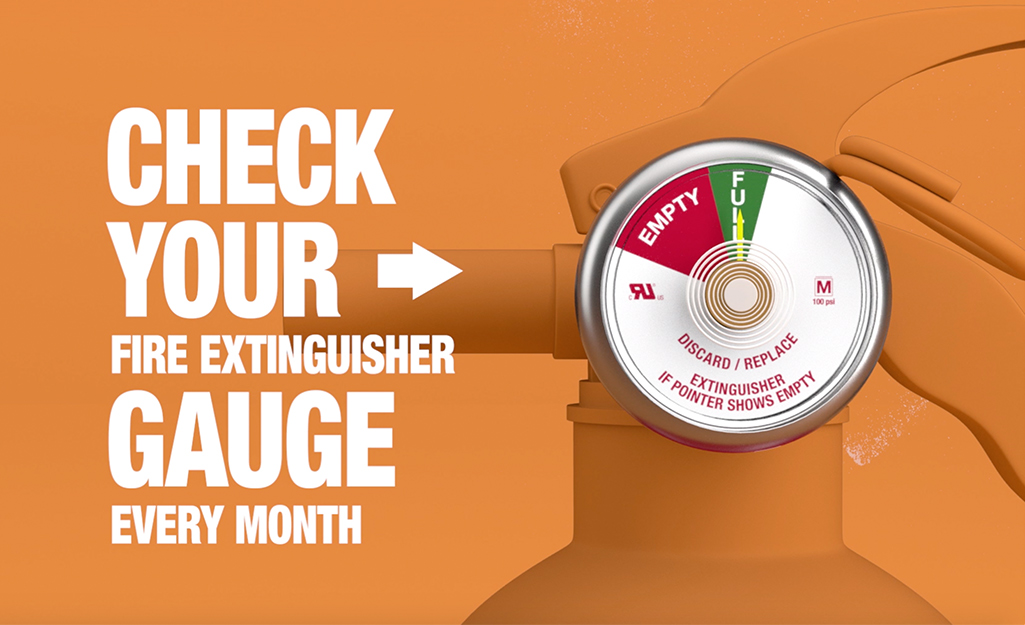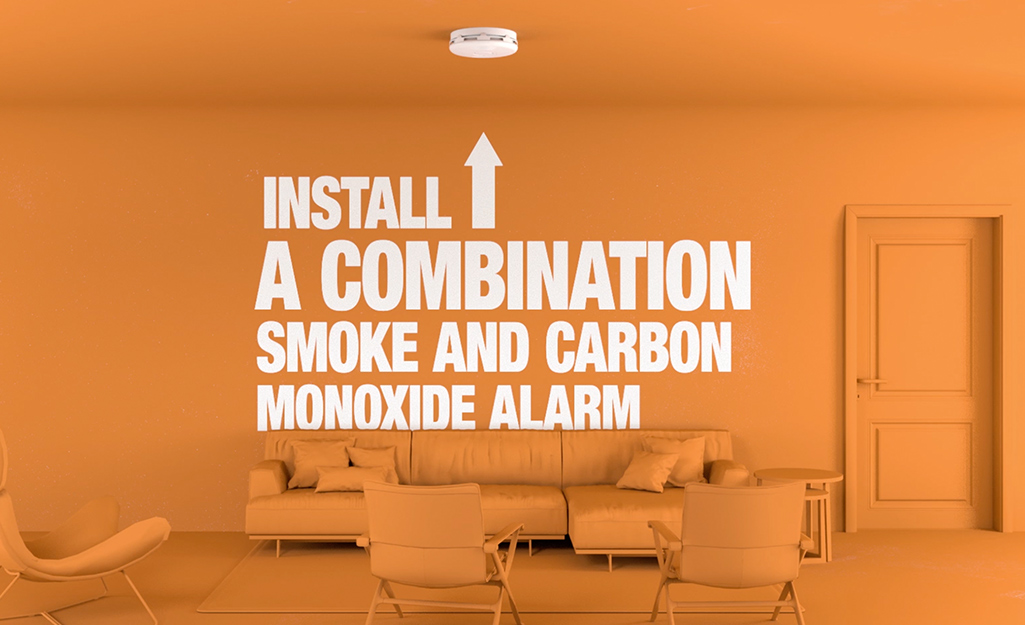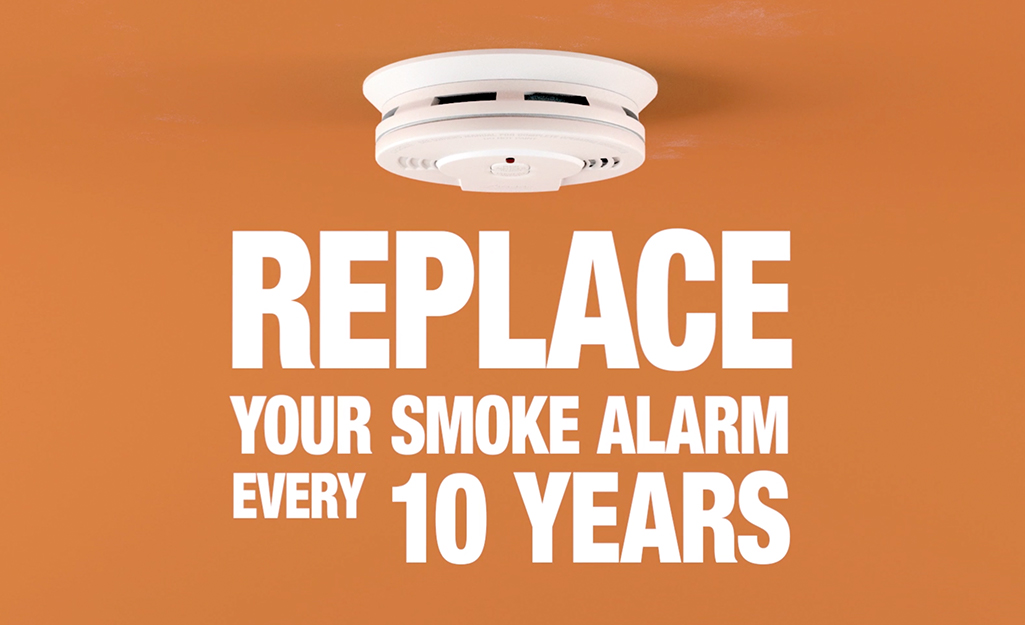How to Use a Fire Extinguisher

Last updated November 10, 2023
When a fire breaks out, every second matters. Personal safety is the first priority, so never think you have to stay and put out a fire. If it's taller than your head, if it's burning beyond the original materials that ignited or if it's not confined to a waste basket or other container, leave immediately. Go to a safe location and call the fire department.
Different kinds of fires require different kinds of extinguishers. This guide will explain the PASS method for how to use a fire extinguisher, will help you find the best one for your needs and will teach you what is the proper way to use a fire extinguisher.
Difficulty:
Beginner
Duration:
Under 2 hours
Table of Contents
How to Fight a Fire with PASS
Fire Extinguisher Safety Tips
What to Do in Case of Fire
Install Smoke Alarms to Help Prevent Fires
How to Fight a Fire with PASS

What is the proper way to use a fire extinguisher? PASS is an acronym to help you remember four important steps in fighting a fire. This method is also referred to as the fire extinguisher pass method.
- P stands for pull the pin on the fire extinguisher. This will also break the tamper seal, a small device that prevents the pin from coming out accidentally.
- A stands for aim the nozzle or hose at the base of the fire. Keep a safe distance away.
- S stands for squeeze the handle to release the extinguishing materials.
- S also stands for sweep the nozzle from side to side. Keep aiming at the base of the fire until it's out, and repeat steps two through four if it starts up again.
Follow the fire extinguisher pass method to successfully put out a fire.
Once you learn how to use a fire extinguisher, you'll want to find the best one for your needs. The three most common kinds use air-pressurized water, carbon dioxide extinguisher and dry chemicals.
- An air-pressurized water extinguisher, labeled type A, will put out fires in paper, wood, rubber, cloth and many plastics.
- A carbon dioxide or CO2 extinguisher, labeled type B, will control fires that start in a flammable liquid, such as grease, a solvent, oil, gasoline, lacquer, some kinds of paints and other materials.
- A C or dry chemical extinguisher is needed for electrical fires, like those that begin in wiring, computers and fuse boxes.
- A BC extinguisher is multi-purpose extinguisher that can put out anything that falls under a type B or C extinguisher. That includes liquids such as grease, and electrical equipment, such as fuse boxes.
- Another multi-purpose extinguisher, called an ABC extinguisher, can be used in place of any one of these individual extinguishers, as it can extinguish items that fall under type A, B or C extinguishers.
- Fires that start from flammable metals, shavings, powders or flakes require a fire extinguisher labeled D.
- Type K extinguishers are recommended for commercial kitchens, where fires can begin in commercial cooking elements such as oils, lard and grease. An ABC extinguisher may be able to smother a small grease fire in your home kitchen, but it could damage your stove. If the fire is small enough, and you can do so safely, first try putting a pot lid over it to cut the oxygen.
- Use only the recommended extinguisher for each kind of fire. Using the wrong one can increase the danger. For example, using an air-pressurized water extinguisher on a flammable liquid fire can spread the flames. Used on an electrical fire, a water extinguisher may lead to
electrocution.
Fire Extinguisher Safety Tips

Before you need to use it, read the use and maintenance instructions that come with your fire extinguisher. Know how far it will discharge its contents. The range is usually from six to 20 feet.
Fire safety experts recommend keeping fire extinguishers in different parts of your home, including your kitchen, garage, in each bedroom and near your outdoor grill.
When shopping for an extinguisher, make sure it’s not too heavy to handle. On the other hand, choose a one with enough capacity to put out a small fire.
Keep at least one primary fire extinguisher on every level of your residence or business. Buy another one if your residence or business has special hazards around or you simply want more protection.
Keep an extinguisher within 40 feet, so you don’t have to go far to get it, but out of the reach of small children. Place it near an open exit, and don’t let anything get between you and that exit, including smoke, flames, heat or burning or smoldering materials.
Always keep your back to the fire.
Have a fire escape plan for your home or business and make sure everyone understands it.
Check your fire extinguisher gauge every month to be sure it’s fully charged and ready to use. Replace your fire extinguisher every seven years.
What to Do in Case of Fire

Sound the fire alarm, if you’re in a building that has one, and/or call 911 if you can do so safely. Otherwise, leave immediately and call the fire department from a safe location.
Don't try to fight the fire unless your extinguisher is fully charged and pressurized. The needle on the gauge should be in the green zone.
Leave immediately if the room fills with smoke, or if the extinguisher empties before the fire is out.
Still not confident about using a fire extinguisher? Ask your local fire department if they offer training on using a fire extinguisher.
Install Smoke Alarms to Help Prevent Fires

Smoke alarms can alert you when a fire breaks out, giving you precious time to escape or control the fire while it’s in an early, manageable stage. Install a smoke detector inside each bedroom of your home. For extra safety, install a combination smoke and carbon monoxide detector on every level of your residence or workplace.
Wireless smoke alarms are available with batteries that can last up to 10 years. An alert sounds when it’s time to replace the unit. Some can also be connected to smoke alarms in other parts of your home or garage.
To avoid false alarms, keep smoke alarms 10 feet away from the stove.
Push the test button on the smoke alarm every 30 days to be sure it’s still working properly and replace the entire alarm every ten years or when needed.
If your smoke alarms use batteries, replace the batteries at least once a year, even if they are still working.
Get all the things you need to protect your home today. The Home Depot delivers online orders when and where you need them.



























